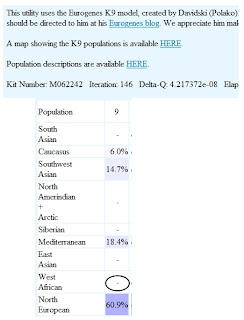 |
| Photo courtesy of www.soldierstudies.org |
The first thing that struck me was the sheer number of alternate spellings for James' name in the records. It's a wonder to me that they ever managed to lump all these names under one person's file. Between 28 pages of records, James' name is written variously as:
James C. McFarland
James C. McFirlin
James J. McFarland
James McFarlin
James C. McFarling
James P. McFailing
Makes me wonder if it was James' accent, the record keeper's hearing, or both that created all those spellings. I don't see any that were created by James himself, and there's no indication of whether he was literate or not, so I can't say exactly what caused all the spelling changes. I'm also left to wonder what his middle name really was, and why his middle initial is recorded so inconsistently.
James enlisted in the Union army in Green County, Tennessee, on 15 March 1863 as part of Company G, 8th Regiment Tennessee Infantry. Three months later he was present with his company at Camp Nelson, Kentucky on 30 June 1863. He fell ill and was marked "absent - sick with leave" for the September-October muster roll. So far, pretty hum-drum right? Then it gets interesting.
The next muster roll, for Nov-Dec 1863 records that James deserted his unit on Christmas Day, 1863, at a place called Blains Crossroads. The Jan-Feb muster roll gave the same information about his desertion. The records don't say where he went or why, just that he was gone. I wonder if he left to be with his family, or because of something he saw/experienced in a battle. Whatever caused him to leave his unit, he left after serving about nine months in the army.
Then James did something I didn't expect - he came back to his unit on 11 April 1864. Upon his return, he was arrested and tried by a court martial. He was apparently let back into the unit with no other consequence than losing three months' pay. Whatever caused him to leave, it must not have been a lack of belief in the cause or a need for the pay, as he stayed through the end of the war this time.
On 6 August 1864, when he was wounded in the right shoulder, and was thus marked absent in the Jul-Aug 1864 muster roll. But in the 31 October 1864 roll, he was back on active duty. Either the wound wasn't serious and he recovered quickly, or he wanted to (or was forced to) go back to the line early. Hopefully he recovered, I'd hate to think about having to go through everything active soldiers endured while still recovering from a bullet wound.
After serving through the end of 1864, he contracted pneumonia and was admitted to a Union hospital in Alexandria, Virginia on 2 January 1865. The Jan-Feb 1865 muster roll states he was "absent sick in hospt. Alex. Va. since Jan 2/65". A hospital record shows he was transferred to "Sickles Barracks" on 24 Feb 1865. His muster roll from Mar-Apr 1865 says he was "absent sick in hosp. since March 4 64", but that has to be an error as he was still AWOL in March 1864. If they meant 1865, it seems James spent the rest of the Civil War in that hospital, as the next record chronologically is his muster out on 30 June 1865.
So to briefly recap:
15 Mar 1863 - enlisted
30 Jun 1863 - present at Camp Nelson, Kentucky
Sep-Oct 1863 - sick
25 Dec 1863 - deserts unit
11 Apr 1864 - returns to unit, arrested, tried by court martial, returns to active duty
30 Jun 1864 - present at camp near Marietta, Virginia
6 Aug 1864 - wounded in battle
31 Oct 1864 - present with unit
Nov-Dec 1864 - present with unit
2 Jan 1865 - contracts pneumonia, hospitalized in Alexandria, Virginia
24 Feb 1865 - transferred to Sickles Barracks
Mar-Apr 1865 - hospitalized with pneumonia
30 Jun 1865 - mustered out
So yeah, very interesting service record. Eventually I hope to fill in some of the gaps and round out the story with more details about his unit, where they traveled, what battles they fought in, etc. This is one ancestor that has a story with lots of twists and turns for such a short time period. Makes me wonder what else there is to learn about him that I don't suspect yet.





+and+Polidore+Vadnais.jpg)







































